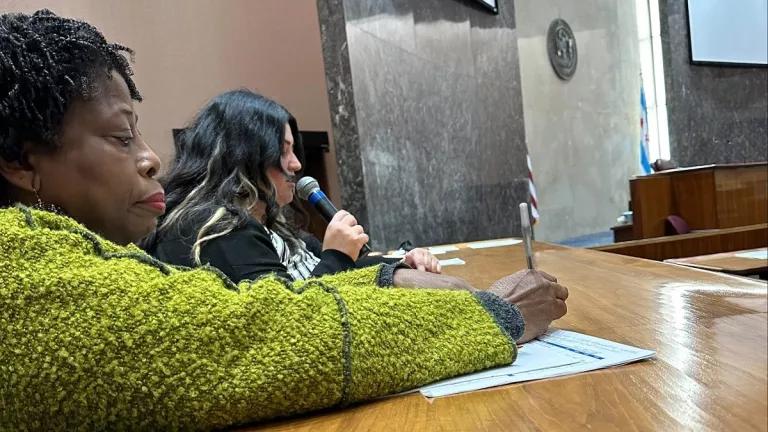
Climate change is fueling stronger and longer heatwaves, intensifying heat-health threats. Over the past three decades, annual average temperatures have been on the rise globally. In fact, 2015 was the hottest year worldwide since recordkeeping began, and 2016 is already nipping at is heels. Extreme heat is a health issue for people everywhere, because it’s not just an inconvenience—it can kill.
A 2003 heatwave in Europe saw over 70,000 deaths. The California heatwave of 2006 saw hundreds of deaths and 16,000 more emergency room visits than expected. The 2006 California heatwave translated into an estimated $5.3 billion in health-related costs. When we reduce heat vulnerability, we avoid those costs in dollars, and in human suffering. Children, the elderly, and low-income households are particularly vulnerable to extreme heat, as are people with preexisting respiratory, heart, or kidney illnesses—altogether, many millions of people.
The National Environmental Public Health Tracking Network has some great online indicators of heat’s effects on health in more than 20 U.S. states, but lacks the resources to paint a nationwide picture of the burden heat places on the health of Americans. The links between extreme heat and health are well known, but we don’t yet have a centralized system to track these impacts across the United States.
That’s why in March of 2015, NRDC convened a National Heat-Health Surveillance Expert Workshop with 50 participants from around the country—from public health departments, universities, research institutes and local governments, all experts on heat-health tracking and surveillance. Today, NRDC is publishing a fact sheet that discusses the major themes from that conference.
The point is that we need to support stronger tracking of heat-health effects in the United States, to build more widespread community climate resilience. The White House has designated this week, May 23 through 27, as National Extreme Heat Week. This week, federal departments and agencies will take a number of actions to raise public awareness and prepare the nation for extreme heat, as described at https://www.ready.gov/heat. As part of this federal initiative, the White House will host a webinar on Thursday, May 26 from 2 to 3 p.m. eastern, and registration is free. The National Oceanic and Atmospheric Administration recently launched a National Integrated Heat health Information System (or NIHHIS) to help prepare the United States for climate and weather extremes. FEMA now lists “Extreme Heat” preparedness tips on their ready.gov site along with other natural disasters.
And many cities and states globally are taking action to reduce communities’ vulnerability to extreme heat. Eighteen cities and states are emerging as leaders in climate-health preparedness, thanks to grants from the U.S. Centers for Disease Control and Prevention’s Climate Ready States and Cities Initiative. The state of Missouri has developed an interactive map, updated at the beginning of each summer, to help people locate local cooling centers when heatwaves strike. Many urban neighborhoods like Northern Manhattan in New York City experience the Urban Heat Island effect, which intensifies summer’s heat as buildings and other manmade materials absorb and re-radiate the sun’s heat. In response, community groups like WEACT for Environmental Justice are developing climate resilience strategies to limit the health-threatening effects of heat and other climate challenges. Other groups like AdaptNY are aiming to foster public conversation about how New Yorkers will adapt to the coming challenges of climate change, and tap the insights of New Yorkers.
Internationally, cities that are being hammered by extreme heat, often without the access to air conditioning that many Americans enjoy, are taking bold steps to protect people from extreme heat. India has suffered terrible heat and drought conditions this year, with its heat records shattered just last week. But to reduce cities’ heat vulnerability, ten cities and two regions in India have developed their own heatwave early warning systems and preparedness plans. They’re modeled after the city of Ahmedabad, in western India’s Gujarat state, which developed the first heat-health early warning system in South Asia in 2013, with the help of NRDC, the India Institute of Public Health in nearby Gandhinagar, and a host of other terrific partners. To spread the word for Extreme Heat Week, the U.S. Embassy in New Delhi is hosting a Facebook chat on climate change and health Wednesday, May 25, with the hashtag #heatsafety.
With communities large and small taking steps to protect themselves from extreme heat, be sure to do your part and take the heat seriously when it comes your way—and help spread the word.



